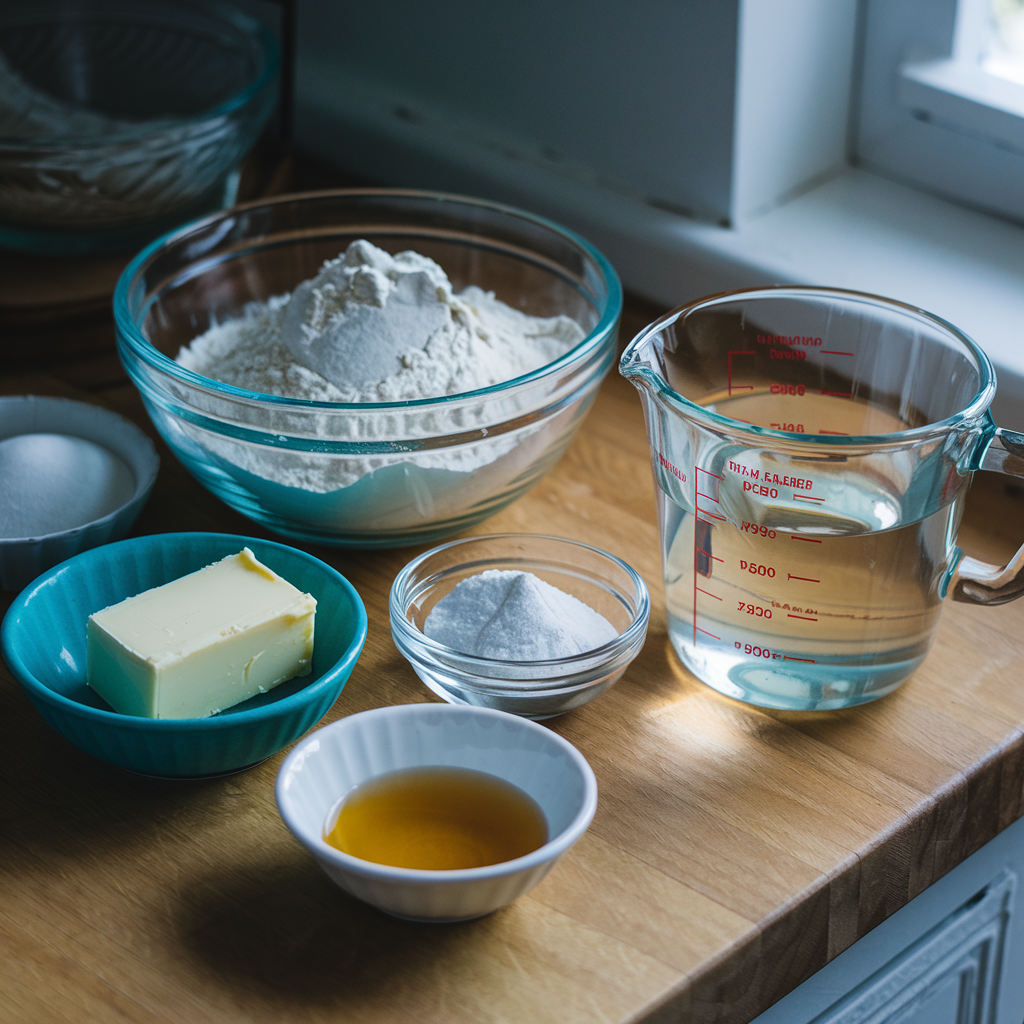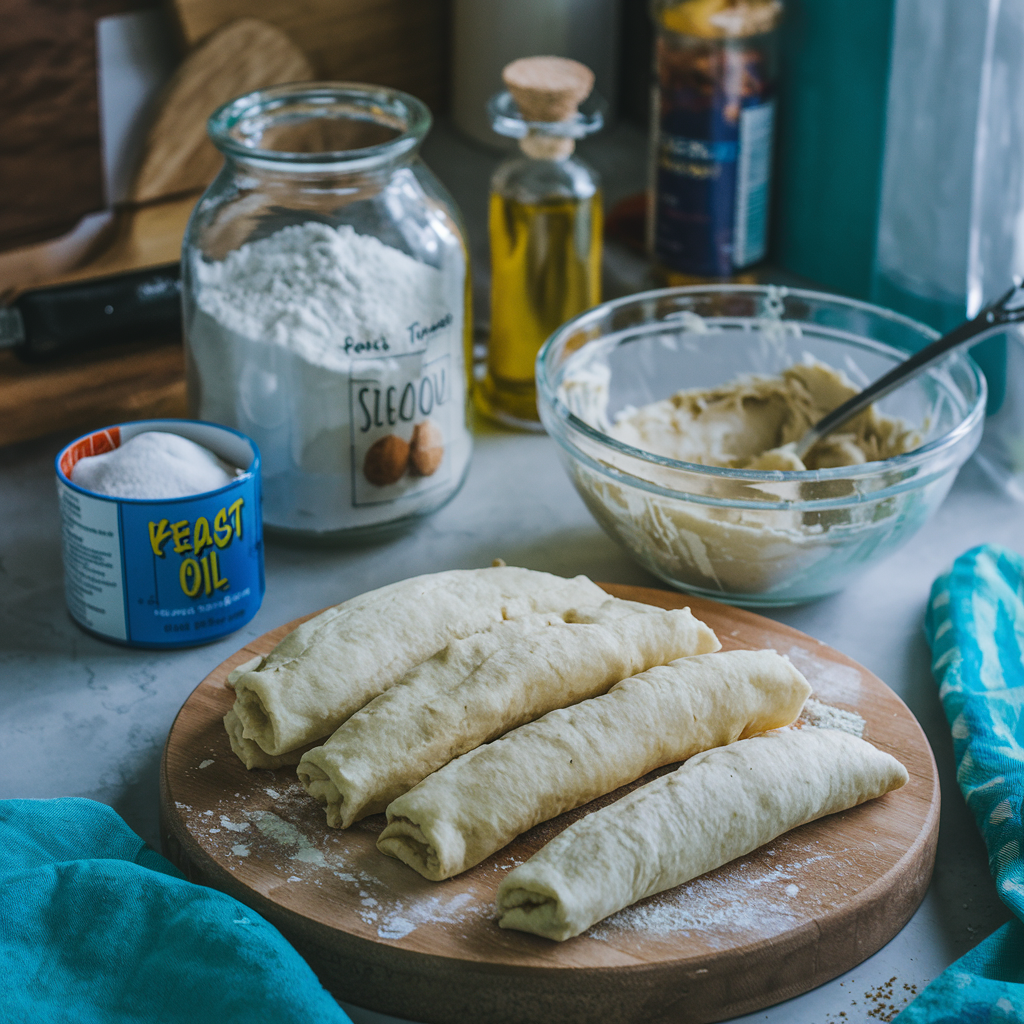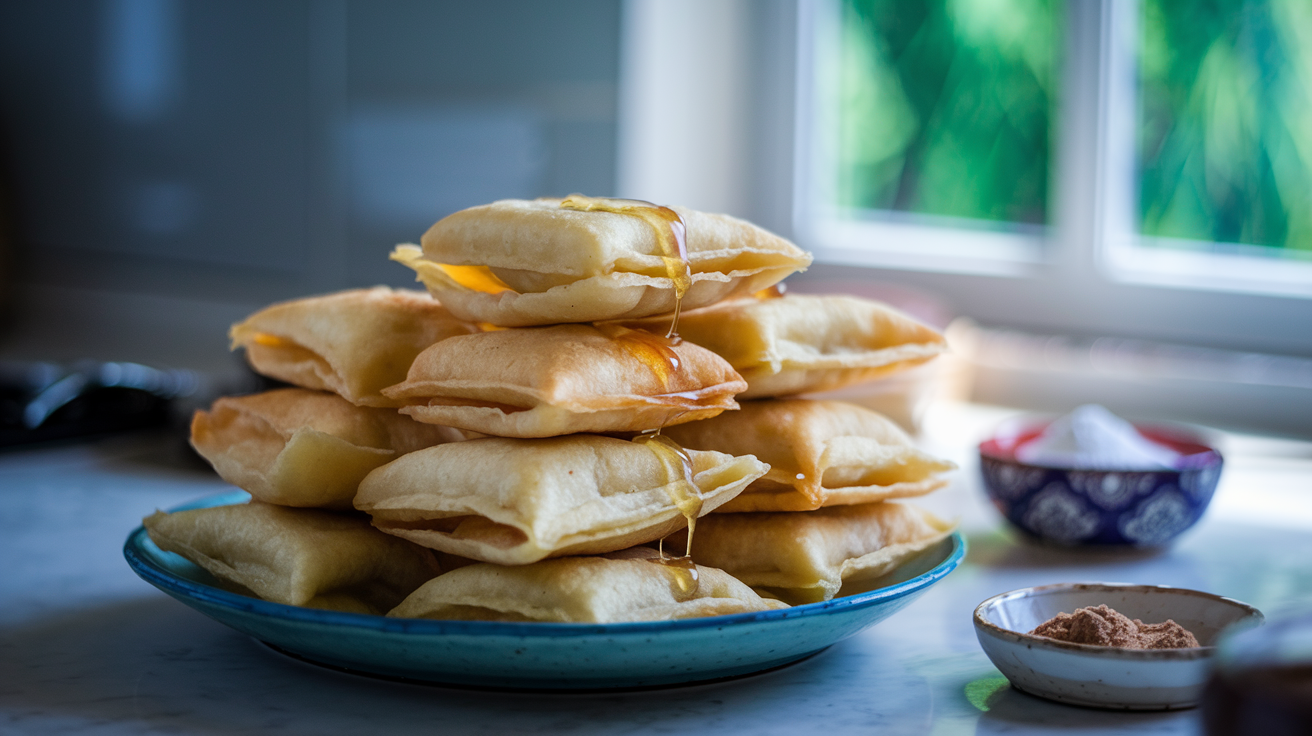Introduction to Sopapillas Recipe
Have you ever tried a sopapillas recipe so simple yet unforgettable? If not, this light, crispy, deep-fried pastry is about to become your new favorite treat. Known as sopaipillas in Spanish, this recipe has been a beloved part of Southwestern and Mexican cuisine for generations. Not only is it easy to prepare, but its versatility means you can enjoy it in countless ways, both sweet and savory.
Interestingly, the word sopapilla comes from the Spanish term meaning “small fried dough.” While their origins trace back to Spain, sopapilla recipes have evolved, becoming a staple in the United States, especially in New Mexico. Typically served with honey or cinnamon sugar, they also pair well with savory fillings, making them perfect for any occasion.
In this guide, you’ll find everything you need to master the sopapillas recipe, from essential ingredients to tools and step-by-step instructions. Let’s get started!
Essential Ingredients for a Sopapillas Recipe
Creating the perfect sopapillas recipe begins with just a few simple ingredients. Each one plays an important role in delivering the ideal flavor and texture.
- All-purpose flour: First of all, this is the base of the dough, providing structure and elasticity.
- Baking powder: Helps the dough puff up beautifully during frying.
- Salt: Balances the flavors and enhances the overall taste.
- Butter or shortening: Adds richness and creates a flaky texture.
- Warm water: Finally, this binds the ingredients together and ensures a smooth dough.
- Oil for frying: Neutral oils like vegetable or canola work best for frying to a golden brown.
For serving, you may also need these optional ingredients:
- Honey
- Cinnamon sugar
- Powdered sugar
Measuring your ingredients carefully is essential. Even a small variation can impact the puffiness and texture of your sopapillas recipe. Moreover, always use fresh baking powder to ensure the dough rises properly.

Tools Needed to Prepare a Sopapillas Recipe
To make the process of preparing a sopapillas recipe as smooth as possible, you’ll need the right tools. Thankfully, most of these are likely already in your kitchen.
- Mixing bowls: Essential for combining your dry and wet ingredients.
- Rolling pin: Helps you achieve an even dough thickness for uniform frying.
- Sharp knife or pizza cutter: Useful for cutting the dough into squares or triangles.
- Frying thermometer: Ensures the oil reaches the ideal temperature (around 375°F).
- Deep frying pan or Dutch oven: Provides enough depth for the dough to puff up.
- Slotted spoon: Allows you to safely remove fried sopapillas while draining excess oil.
- Cooling rack: Keeps the pastries crisp as they cool.
By preparing these tools in advance, you’ll set yourself up for success when making your sopapillas recipe.
Step-by-Step Guide to Making a Sopapillas Recipe
Mastering a sopapillas recipe may initially seem daunting, but breaking it into simple steps makes it manageable. Here’s how to make perfect sopapillas every time.
Mixing and Rolling the Dough for a Sopapillas Recipe
- Combine the dry ingredients: First, in a large bowl, mix flour, baking powder, and salt. Stir well to ensure even distribution.
- Add the fat: Next, cut in butter or shortening until the mixture resembles coarse crumbs.
- Add water gradually: Slowly pour in warm water, mixing until a soft dough forms. If the dough feels sticky, add a little more flour.
- Knead the dough: On a floured surface, knead the dough for 2-3 minutes until smooth and elastic.
- Let it rest: Cover the dough with a damp cloth and let it rest for 30 minutes. This step ensures the dough is tender and easy to roll.
- Roll it out: Using a rolling pin, roll the dough to about ¼-inch thickness. A uniform thickness is critical for evenly puffed sopapillas.
Cutting and Frying the Sopapillas
- Slice the dough: Next, use a sharp knife or pizza cutter to divide the dough into squares or triangles, approximately 3-4 inches in size.
- Heat the oil: In the meantime, heat oil in a deep frying pan or Dutch oven to 375°F. Use a thermometer for accuracy.
- Fry the dough: Carefully place a few pieces of dough into the hot oil, making sure they don’t overlap.
- Flip and cook: Fry for 1-2 minutes on each side until golden brown and puffed.
- Remove and cool: Transfer the fried sopapillas to a cooling rack lined with paper towels to drain excess oil.
Serving Sopapillas
Freshly made sopapillas are best served warm. Here are some ideas to try:
- Classic style: Drizzle with honey or sprinkle with powdered sugar.
- Savory version: Fill with refried beans, cheese, or meat for a hearty snack.
- Dessert twist: Pair with ice cream or dip in chocolate sauce for an indulgent treat.
With these serving ideas, your sopapillas recipe will stand out at any meal or gathering.
Variations of Sopapillas Recipes
The best thing about sopapilla recipes is their versatility. Here are some creative variations:
- Whole wheat sopapillas: Substitute all-purpose flour with whole wheat for a nuttier flavor.
- Gluten-free sopapillas: Use a gluten-free flour blend and adjust the liquid ratio.
- Stuffed sopapillas: Add savory fillings like seasoned beef, chicken, or beans before frying.
- Dessert sopapillas: Mix cinnamon and sugar into the dough for an extra-sweet version.
No matter which variation you try, a sopapilla recipe offers endless opportunities for creativity.

Healthy Alternatives for Sopapillas
For those looking for healthier options, there are several ways to make a lighter sopapillas recipe:
- Bake instead of fry: Brush the dough with a little oil and bake at 400°F until golden and puffed.
- Air-fried sopapillas: Use an air fryer for a crispy texture with less oil.
- Low-sugar toppings: Replace honey and powdered sugar with fresh fruit or yogurt.
- Alternative flours: Try almond or oat flour for a lower-carb option.
These adjustments help maintain the essence of a sopapilla recipe while making it more nutritious.
Common Mistakes to Avoid in a Sopapillas Recipe
Avoiding these mistakes will ensure success:
- Skipping the rest period can result in dense dough.
- Uneven rolling may cause uneven cooking.
- Using incorrect oil temperature can lead to soggy or burnt sopapillas.
Make-Ahead Tips for Sopapillas
Although sopapillas are best served fresh, you can prepare parts of the recipe ahead of time:
- Prepare the dough in advance: Wrap the dough in plastic and refrigerate for up to 24 hours. Let it come to room temperature before rolling out.
- Freeze uncooked dough: Cut the dough into shapes and freeze on a tray before transferring to a freezer bag.
- Reheat fried sopapillas: Warm them in the oven at 350°F for a few minutes to restore their crispiness.
These tips ensure you can enjoy sopapillas even on busy days.
Pairing Sopapillas with Drinks and Sides
The right pairings can elevate your sopapilla experience:
- Drinks: Hot chocolate, coffee, or horchata complement the sweetness of sopapillas beautifully.
- Sides: Serve with fresh fruit, ice cream, or a savory soup to balance the flavors.
Additionally, pairing them with a tangy dipping sauce can create a unique flavor contrast.
Sopapillas vs. Beignets: Common Questions Answered
Are Sopapillas Like Beignets?
While sopapillas and beignets are both delicious fried pastries, they’re not quite the same. Sopapillas are typically lighter, puffier, and often served with honey or cinnamon sugar. On the other hand, beignets are denser and more doughy, commonly dusted with powdered sugar, and associated with New Orleans cuisine. Both are fried to perfection, but sopapillas are more versatile, being used in both sweet and savory dishes.
What Is a Sopapilla in Spanish?
In Spanish, the word « sopapilla » translates to « little pillow » or « fried dough. » The term reflects their puffed, pillow-like shape when fried. Sopapillas are part of the culinary traditions of Spanish-speaking countries and regions, where they are served as a dessert or snack.
What Ethnicity Is Sopapilla?
Sopapillas have roots in Spanish and Moorish cuisines, but they are widely associated with New Mexican and Southwestern American culture today. They were introduced to the Americas through Spanish colonization and have since become a staple in Tex-Mex and Southwestern cuisine. Their exact preparation and presentation can vary depending on the region.
Are Beignets Just Funnel Cake?
Not exactly! Beignets and funnel cake may share some similarities—both are fried and sweet—but their preparation and texture are quite different. Beignets are made from a yeast-based dough, which gives them a soft and pillowy texture, while funnel cake is created by pouring a batter into hot oil, resulting in a crispy, lace-like treat. Additionally, beignets are traditionally square-shaped, whereas funnel cakes are circular and freeform.
« Bring a touch of nostalgia to your table with Casserole Recipes or bake something sweet like our Easy Banana Bread Recipe. »
Conclusion: Why Sopapillas Are a Must-Try Treat
In conclusion, sopapillas are a treat that combines simplicity, tradition, and versatility. Whether you enjoy them sweet or savory, they offer endless opportunities for creativity. Moreover, they’re easy enough for beginners and fun for experienced cooks to experiment with.
So why wait? Grab your ingredients, try these tips, and savor the magic of homemade sopapillas.

1 réflexion au sujet de « A Step-by-Step Guide to Perfect Sopapillas »